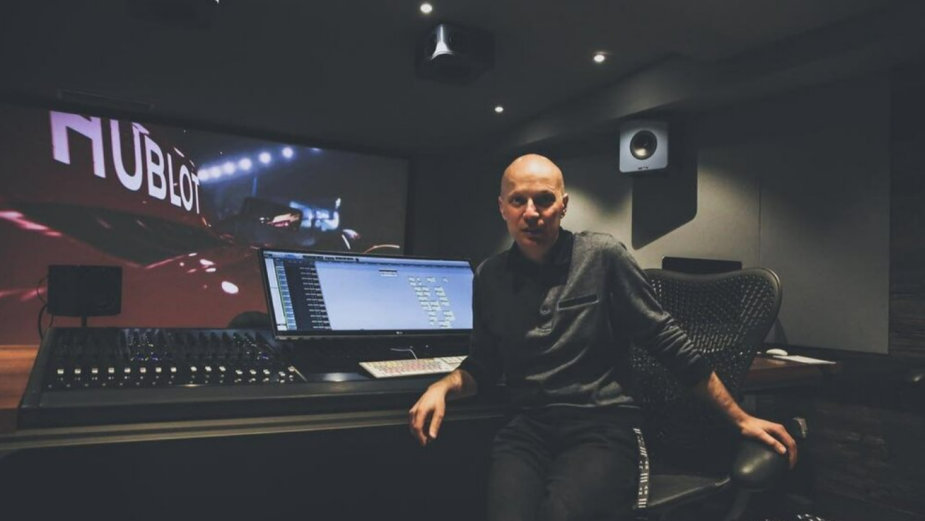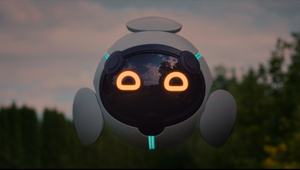
“Sound Is The Medium of Insinuation”

Sound is often described as an invisible art. When executed to perfection, the sound design within a piece of film should not even enter your consciousness. Perhaps this is why the importance of sound on screen can often be underrated. But sound has a pivotal role to play; providing essential cues, details and atmosphere that together with the visuals, presents us with the full picture.
In this interview, ENVY Advertising’s Arge reveals how sound can elevate a storyline and how he sees its use evolving this year.
LBB> There is so much more to film than just the visuals. How important do you feel sound design is to the overall success of a piece?
Arge> Sound doesn’t only exist just to reflect what is happening on screen. It’s intention is also to help tell the story, or even create a new story of its own. You are not using an important tool in your tool box if you don’t use sound as another storytelling device. Or at least, as a way to provoke an emotional response.
Truffaut put it well in his conversations with Hitchcock: "To describe a sound effect accurately, one has to imagine its equivalent in dialogue.”
LBB> What about silence? How can the absence of sound be used effectively?
Arge> A sound is only as dramatic as the sound that comes before it. So if that sound is silence then, well, you’ve got a very dramatic opportunity to follow. Take ‘A Quiet Place’ - a movie without much spoken dialogue or loud sound effects. As its sound designer Erik Aadahl says, “The quiet becomes loud and the loud becomes ear-piercing.”
‘A Quiet Place’ uses lack of sound to create a story filled with almost unbearable tension. It’s meant to make the audience afraid to make the slightest sound, lest they put the characters in danger.
LBB> Sound has been a bit of an invisible art. Do you think it is becoming more and more recognised?
Arge> More and more of my clients these days are asking if we can not have a music score on their project, just sound effects. Creatives and directors, I find, do get genuinely quite excited about the prospect of telling their story with sound design alone. Quite often they will take any opportunity to ditch the music (the producer is happy about that too!).
Hitchcock often used sound effects to do the job of music. ‘The Birds’ being the classic example. It’s a film with no musical score. Instead of music cues, the sounds of the birds provide all the emotion and tension a musical score would normally do.
Clients love it when you can reference great sound moments from feature films and bring those influences into their project. For that reason knowledge of Edgar Wright’s films is essential!
LBB> What have been some of your favourite examples of sound design within film or TV recently?
Arge> Particular credit must go to Denis Villeneuve and his sound team. Denis is a great example of the benefit of early collaboration with the sound team. With Dune, sound designers Mark Mangini and Theo Green were brought in straight after the screenplay was written to start crafting the soundscape of the Arrakis desert. So many of the visuals in Dune were based on the sound that was created in advance. I certainly think this is something you are hearing about more and more.
I also very much enjoyed the use of sound and dialogue on ‘Wanda Vision’ to bridge the two worlds - it was so nicely done. There was a lot of attention to detail in the sound design, music and dialogue to help lay cues to what’s really going on in Wanda’s world. A really great example of using sound to add an extra layer of narrative above what the picture is doing.
LBB> What elements make for great sound mixing and editing?
Arge> I can clearly remember all the projects where the client got me involved from a very early concept stage, and they all stand out as some of the best projects I’ve worked on. With the best end results. Like Denis, always involve your sound designer as early as possible.
As a sound designer, nothing is worse than being handed a cold offline and your first thought is, “if only they had….”. Even just working to an over length animatic is far from time being wasted. I’ve worked on lots of projects where I’ve handed over a sound bed before a frame of footage has even been shot and the results have always been great.
LBB> How do you approach your own work?
Arge> In our world it’s not just about whether you’ve made a great bit of sound design. It’s as much about your relationship with the client along the way, and how you deal with obstacles in the decision making process.
It’s not about how glamorous or high profile the project you are working on is, it’s about what you can bring to it. Whether it be a Nike ad or an ad for a mattress company. What is it that you as the sound designer can do to make a difference? The reaction you are after from the client is “wow you’ve really lifted our film, thank you”. That’s the feedback you want at the end of the day.
The most important thing is whether the client believes they made the right choice using you. And will they come back?
LBB> How have you seen sound design develop over the past year and what do you predict to see in 2022?
Arge> Dolby Atmos has become considerably more established, and user friendly. It would be great to get to a point where more and more jobs think about sound as not just left and right but above and behind too.
I’ve already noticed a very satisfying feeling of space when monitoring back Atmos projects in stereo over traditional stereo mixes. It’s really only time restraints on projects that are holding me back from just mixing everything in Atmos!
LBB> What is a little-known fact about sound design that you wish people would appreciate more?
Arge> Sound is the medium of insinuation. So don’t just think about what’s going on on-screen, but what could be going on off-screen.
The right sound effect becomes even more important when the action it corresponds to is happening off-screen. If one character goes off-screen and picks up their coat from the back of a chair, the sound designer will add the quiet sounds of the coat being picked up, as well as the door opening and closing. This assures the audience that the character has left the Room. Or the sound design could add the sound of a gunshot and a gut wrenching scream. Two completely different outcomes to the same scene!













